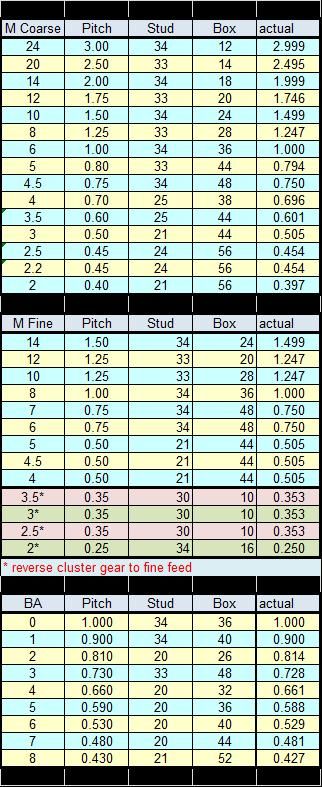Cutting a 5/3 mm pitch thread on a Myford S7 with gearbox
Cutting a 5/3 mm pitch thread on a Myford S7 with gearbox
- This topic has 15 replies, 4 voices, and was last updated 23 May 2015 at 16:24 by
Adam Harris.
Viewing 16 posts - 1 through 16 (of 16 total)
Viewing 16 posts - 1 through 16 (of 16 total)
- Please log in to reply to this topic. Registering is free and easy using the links on the menu at the top of this page.
Latest Replies
Viewing 25 topics - 1 through 25 (of 25 total)
-
- Topic
- Voices
- Last Post
Viewing 25 topics - 1 through 25 (of 25 total)
Latest Issues
Newsletter Sign-up
Latest Replies
- Metal stock
- More Lidl questions
- Sieg KX3 spindle motor replacement/upgrade
- Taylor Hobson cutter grinder modificaton
- Family tree prog
- How to identify a thread, ACME vs TR
- indexing head lathe
- LBSC Dot/Diana Cylinder Castings
- Can a metric baby do imperial?
- Calling all Little John and other Raglan users






